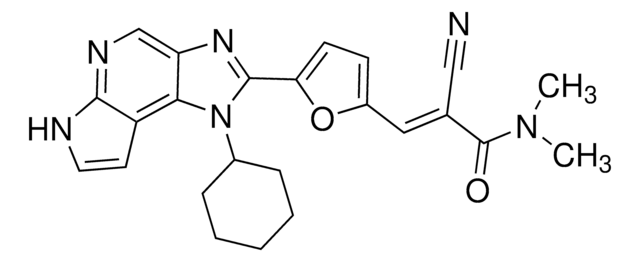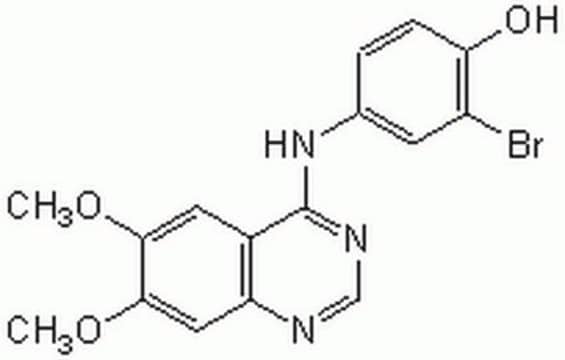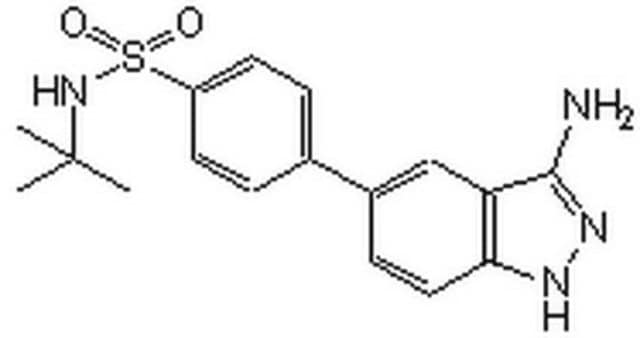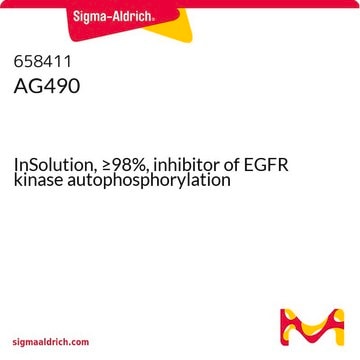420097
JAK-Inhibitor I
InSolution, ≥98%
Synonym(e):
InSolution JAK-Inhibitor I, 2-(1,1-Dimethylethyl)-9-fluor-3,6-dihydro-7H-benz[h]-imidaz[4,5-f]isoquinolin-7-on, P6, Pyridon 6, DBI, JAK1-Inhibitor I, JAK2-Inhibitor I, JAK3-Inhibitor X
About This Item
Empfohlene Produkte
Qualitätsniveau
Assay
≥98% (HPLC)
Form
liquid
Hersteller/Markenname
Calbiochem®
Lagerbedingungen
OK to freeze
desiccated (hygroscopic)
protect from light
Versandbedingung
wet ice
Lagertemp.
2-8°C
InChI
1S/C18H16FN3O/c1-18(2,3)17-21-14-10-5-4-9(19)8-12(10)13-11(15(14)22-17)6-7-20-16(13)23/h4-8H,1-3H3,(H,20,23)(H,21,22)
InChIKey
VNDWQCSOSCCWIP-UHFFFAOYSA-N
Allgemeine Beschreibung
Biochem./physiol. Wirkung
JAK1 der Maus
Verpackung
Warnhinweis
Physikalische Form
Rekonstituierung
Sonstige Hinweise
Rechtliche Hinweise
Lagerklassenschlüssel
10 - Combustible liquids
WGK
WGK 2
Flammpunkt (°F)
188.6 °F - closed cup - (Dimethylsulfoxide)
Flammpunkt (°C)
87 °C - closed cup - (Dimethylsulfoxide)
Analysenzertifikate (COA)
Suchen Sie nach Analysenzertifikate (COA), indem Sie die Lot-/Chargennummer des Produkts eingeben. Lot- und Chargennummern sind auf dem Produktetikett hinter den Wörtern ‘Lot’ oder ‘Batch’ (Lot oder Charge) zu finden.
Besitzen Sie dieses Produkt bereits?
In der Dokumentenbibliothek finden Sie die Dokumentation zu den Produkten, die Sie kürzlich erworben haben.
Unser Team von Wissenschaftlern verfügt über Erfahrung in allen Forschungsbereichen einschließlich Life Science, Materialwissenschaften, chemischer Synthese, Chromatographie, Analytik und vielen mehr..
Setzen Sie sich mit dem technischen Dienst in Verbindung.








